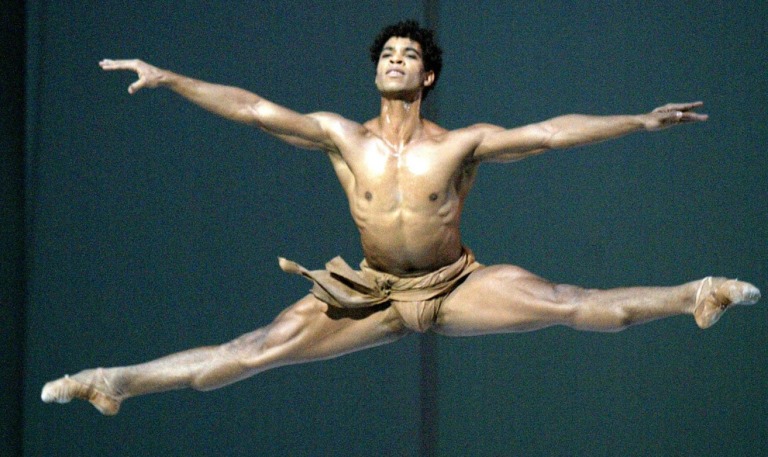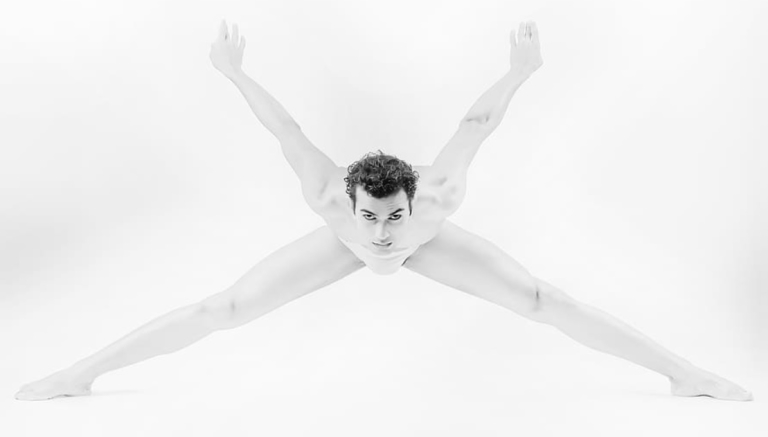Most of us know a woman training in ballet is a ballerina, but what is a male ballerina called actually?
Is it alright to simply attach a prefix to specify the gender or do we have a more professional word to use?
Let’s have a very quick linguistic lesson together!
Table of Contents
What Is A Male Ballerina Called?
Did the question get you? Unfortunately, “ballerina” is a term for female ballet dancers only, so there is nothing such as “male ballerina”.
People make up words they don’t know sometimes and “male ballerina” became a common misunderstanding.
In fact, you should call a male ballet dancer “dancer” – nothing more and nothing less.
In traditional ballet, the dancers are associated with titles with specified genders.
The French language uses danseur for men and danseuse for women. Meanwhile, Italy refers to them as danzatore and danzatrice. English doesn’t specify genders like them, thus it borrows the terms.
Surprisingly enough, Russia is another country with a significant influence on the popularity of ballet but they don’t have any unique terms for ballet dancers.
A “male ballerina” (you know it is an inaccurate way of saying it now!) is called “артист балета” in Russian. It is a masculine noun, though it is simply translated to “ballet dancer”.
If you are wondering where ballerina comes from, let’s move on to the next part!

Check more: Top 10 famous male ballet dancers
French And Italian Words For Ballet
A large part of ballet terminology is from Italy and France – the former is the origin of ballet and the latter is where it becomes much more intricate.
They have the answer to your question of what a male prima ballerina is called, yet the meaning they adopted, in the beginning, might be different from what you have known or assumed.
Ballerina
The term “ballerina” first appeared in 1815 even though ballet had a 150-year history by then. However, the title held more weight in the old days.
In Italian ballet, “ballerina” is a title for the principal female ballet of a renowned company.
When you mention this term, people who are more familiar with classical ballet will immediately know you are referring to the star of the performance – the most outstanding of them all.
Nowadays, its meaning has been expanded significantly. When you say “ballerina”, everyone will think of a woman practicing and performing ballet, regardless of level.
Read more: Why Do Ballerinas Wear Leg Warmers?
Ballerino
“Ballerino” also originated from the Italian language. It is the male version of a prima ballerina, hence it also used to be exclusively for the main male dancer in a prestigious company.
The expansion of what “ballerina” means led to a wider connotation for “ballerino”. Today, men who do ballet can be considered “ballerinos” without the sense of rankings in the past.

Danseur
If the Italian connoisseurs had ballerina and ballerino, French ballet was also developed enough to come up with their own terms.
“Danseur” is the word for male dancers and simultaneously the correct way to refer to a male ballet dancer.
Furthermore, the male head of a ballet company is “Danseur Noble”. Both male and female dancers of the troupe are divided into two groups: corps de ballet dancers and soloists.
Even though English speakers use “ballerino” more often because it has a bond with “ballerina”, they will certainly understand what you mean by “danseur” instantly.
Words To Rank Ballet Dancers
In contrast with the tender and artistic looks, ballet is physically and mentally demanding. The art of ballet is for both genders, despite the roles for each gender being unchangeable.
The race to become the best performer in a company is as severe as any professional dance contest out there. Besides, this competitive environment results in the dancers being evaluated and ranked in a strict hierarchy.
Classical ballet has these ranks for women to achieve, from highest to lowest:
- Prima Ballerina (also Première Sujet or Première Danseuse)
- Sujet
- Coryphée
- Corps de ballet
The ranks for men are quite similar as well:
- Premier Danseur Noble
- Premier Danseur
- Sujet
- Coryphée
- Corps de ballet
The ranking system has survived until this day but with minor adjustments.
To avoid misunderstanding about discrimination, the classification is less based on gender and less independent of an individual as well.
In each gender, a company will have a few seniors entitled as Étoile or Principal Dancer, setting them apart from lower ranks like Soloists and Corps de Ballet.
Beyond the borderline of the company, you might encounter other titles sometimes:
- Guest Artist: A high-ranked dancer of a company whose talents have been acknowledged widely, enough to get invitations from other companies and tour with them. Dancers of this level usually have the main roles.
- Prima Ballerina Assoluta: Rarely used nowadays, it resembles an honored achievement rather than a rank. It is reserved for exceptional dancers with an internationally notable and acclaimed career only.
Ballet Is Not Effeminate, It’s Feminine!
There is no doubt that the ballerina is the icon of ballet. And we automatically think of an elegant woman doing a perfect en pointe or arabesque whenever someone brings up the topic.
Nonetheless, nothing about ballet is effeminate.
To perform a basic ballet position, numerous groups of muscles in your body must exert and stretch to their limits. A dancer can only start executing those moves after several years of intensive and regular training.
Outsiders would be shocked to know a professional ballet dancer can wear out about 100 pairs of shoes each season. If the exertion of ballet moves renders fabrics in such a ruined state, imagine what it might do to our bodies.
The male ballet dance physique is nowhere near “effeminate” – they need to maintain a standard stature and weight, execute the same moves as the ballerinas, and perform necessary lifting.
Final Words
If you see someone saying “male ballerina” regarding a man doing ballet, you can confidently correct the error and explain why they shouldn’t use it.
Ballerino is the right option here, for it is the male equivalent of ballerina.
Although they both only referred to the most phenomenal dancers in traditional companies before, the frequent usage of the English language has eventually taken the sense of honor away from them.
